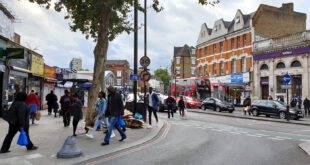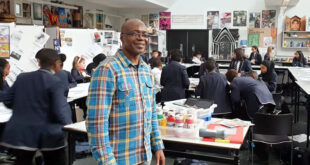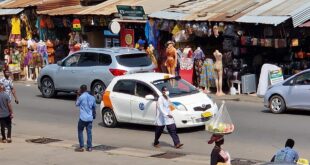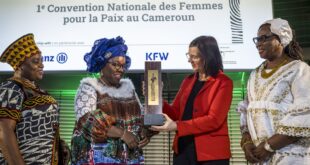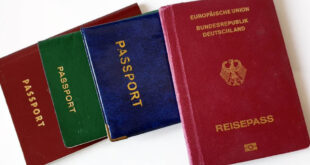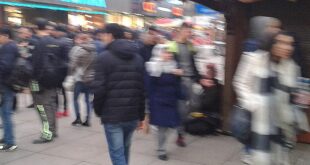In recent months, social networks across Africa have been saturated with photos and videos showing horrified people demonstrating against the presence of plastic in food items, like rice and eggs. Yet most of these videos don’t have a grain of truth (or plastic) in them. Alexandre Capron, a French journalist and member of the Observer Team of France24 (OTF), has looked into the origins of these conspiracy theories and how their propagation has led to calls for increased protectionism and conflated nationalism in different countries across the continent.
This article is the second in a two-part series in which Capron speaks to experts who explain how and why these hoaxes have gained so much momentum online.
If you want to check out the first part of the investigation, click here!
Where does this rumour of rice made from plastic come from?
While most of the videos that people online claim prove the existence of “plastic rice” actually show something else entirely (for example, the manufacturing of plastic packing pellets and not, as claimed, rice), these rumours are actually based on real scandals in the food industry.
The term “fake rice” was first used in relation to a scandal in 2010 involving the Chinese company Wuchang, which makes high-quality rice. The company was accused of mixing its rice with another, lower quality rice, and selling it under the same label. The production of this rice was stopped, but the term “fake rice” was born.
In 2011, the press started relaying another scandal. Many different articles cited a report first published on the Vietnamese website Very Vietnam claiming that Chinese authorities had confiscated large quantities of rice made out of “a mix of potatoes, sweet potatoes and synthetic resin containing traces of plastic”. The authors of these articles referred to the rice in question as “plastic rice”, without ever specifying the percentage of plastic actually present in it. As the American website “Snopes” demonstrated, this story was never actually corroborated, but it popped up again several times in the years between 2011 and 2016.

More recently, in December 2016, Nigerian authorities announced that they had seized about a hundred bags of “plastic rice”. However, after an investigation was carried out, the Nigerian Minister of Health announced that while small amounts of plastic residue had been found in the middle of the bags, the rice itself didn’t contain even the smallest trace of plastic.
In early May, similar reports popped up in several other countries, including Senegal, Burkina Faso, the Ivory Coast and the Comoros. In some cases, like in Senegal and the Ivory Coast, the rumours were so widely circulated that the country’s health ministers actually released statements assuring the population that they were false. No analysis to date has proven the existence of rice made with plastic being sold anywhere in Africa.
Why are these videos so widely shared?
All of the posts purporting that there is plastic in rice and other food items being sold in Africa claim that these products come from Asia, most often China. Most also accuse these manufacturers of trying to poison consumers.
The majority of these Facebook posts claim that the rice containing plastic hails from China, without offering further proof of these accusations. Often, these posts also urge readers to eat and buy “local”. The posts are usually shared with videos meant to illustrate these claims — however, no context to the footage is given, and it doesn’t show anything concrete anyway. People seem to share the video for one of two reasons: to attack Chinese businesses or just to go viral. These posts draw on well-worn stereotypes about fake Chinese products.

Nicolas Cordray teaches history, geography, civics and social studies at a high school in Vire in the French department, Normandy. He and his students carried out an investigation into conspiracy theories about plastic rice.
In many of the videos about plastic rice, such as those shared by TellMeMore TV [Editor’s note: a YouTube channel that promotes “African resistance”], the language used against Asian people is extremely violent. People refer to them as “assassins” or talk about the “evil Chinese”. Statements like this draw on stereotypes about China and are also used as a call to nationalism and African pride. Behind these videos, there is clearly a protectionist goal that is tinted with anti-Asian racism. All of these elements contribute to the fact that these videos have gone viral.
Are these videos meant to protect the local economy?
This battle over rice does have high stakes for several countries in West Africa — in 2016, according to the FAO, the region produced close to 9.5 million tonnes of rice. West Africa imports 9 million tonnes of this rice, which represents about 25% of worldwide imports.
Patricio Mendez del Villar is an economist and researcher at Cirad, the French agricultural research and international co-operation organisation working for the sustainable development of tropical and Mediterranean regions. He says that West Africa is a strategic market for Asian exporters.
Sub-Saharan Africa produces about 60% of the rice it consumes, and imports the rest. This zone, in West Africa, is an important market in terms of volume for exporters of rice from India, Vietnam, Pakistan, and Thailand. China itself has started importing rice recently. So the widely held belief that most of the rice imported to West Africa comes from China is not exactly correct.
My research in several African countries showed that consumers prefer imported rice for its quality: it has a low rate of impurity and, unlike locally grown rice, it doesn’t need to be washed first. The advantage of imported rice is that it is always available — as soon as the next shipment arrives. On the other hand, it is expensive to stock local rice and it requires a political will to implement the needed infrastructures and to subsidise some of the cost.
Consumers in West Africa are becoming more demanding in terms of the quality of the food that they eat. That’s why countries like Senegal and Ivory Coast are the biggest importers of rice in the region [Editor’s note: 70% to 80% of imported rice goes to one of these two countries]. Conversely, Mali produces about 90% of the rice consumed in the country.
Is there a link between these facts and figures and the popularity of the “fake rice” videos? It’s impossible to know for sure. But it is interesting to see that the scandal about “fake rice” has been more widely shared in countries that import a lot of Asian rice, including Senegal and Ivory Coast. In Mali, which produces and consumes local rice for the most part, these videos haven’t really been widely circulated.

What about the quality of the rice in these videos?
Even though some of the footage that has been shared in relation to this scandal has been misappropriated, we can still be critical about the quality of the rice shown in these videos, says Dr Fallou Sarr, the director of the Food Technology Institute in Dakar.
Tests carried out in Senegal show that the rice in these videos is what we call “downgraded” rice. While you can eat this rice, it is more than two years old, which means the amount of sugar has increased. Eating “downgraded” rice is not good for your health and can be a factor causing diabetes.
Downgraded rice isn’t supposed to be sold in supermarkets but it is likely that unscrupulous vendors do anyway. We found that a lot of the rice we tested was, actually, downgraded.
Several countries in West Africa, including Senegal, will launch important programmes aimed at achieving self-sufficiency in rice production between now and 2018. In Senegal, the goal of this programme is to go from producing 450,000 tonnes to 950,000 tonnes in the next five years.
To read the first part of the investigation into rice made out of plastic, click the link below:
INVESTIGATION: “Plastic rice” (Part 1): the videos tricking African social media
 THE AFRICAN COURIER. Reporting Africa and its Diaspora! The African Courier is an international magazine published in Germany to report on Africa and the Diaspora African experience. The first issue of the bimonthly magazine appeared on the newsstands on 15 February 1998. The African Courier is a communication forum for European-African political, economic and cultural exchanges, and a voice for Africa in Europe.
THE AFRICAN COURIER. Reporting Africa and its Diaspora! The African Courier is an international magazine published in Germany to report on Africa and the Diaspora African experience. The first issue of the bimonthly magazine appeared on the newsstands on 15 February 1998. The African Courier is a communication forum for European-African political, economic and cultural exchanges, and a voice for Africa in Europe.




